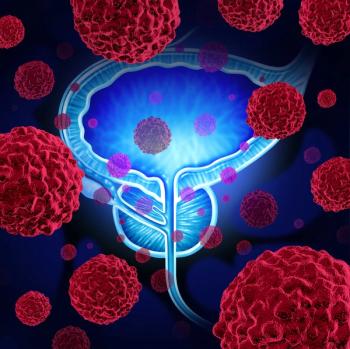
- ONCOLOGY Vol 14 No 3
- Volume 14
- Issue 3
Commentary on Abstracts #432, #4392, and #402
Rituximab is generally well tolerated, with toxicities that tend not to overlap with those resulting from chemotherapy. Moreover, in vitro data suggest that monoclonal antibodies may sensitize lymphoma cells to the effects of chemotherapeutic
Rituximab is generally well tolerated, with toxicities that tend not to overlap with those resulting from chemotherapy. Moreover, in vitro data suggest that monoclonal antibodies may sensitize lymphoma cells to the effects of chemotherapeutic agents, particularly the purine analogs (Demidem et al: Cancer Biochem Radiopharmaceuticals 12:177-186, 1997; Johnson and Press: Int J Cancer 85:104-112, 2000). These features make rituximab an excellent candidate for use in combination with chemotherapy.
Rituximab is now being combined with virtually every chemotherapeutic regimen that is being used in indolent or aggressive NHL or in chronic lymphocytic leukemia (CLL). However, the design of these programs is more often empiric than based on scientific rationale. The optimal schedules of administration of these combinations are being evaluated to determine whether administration of the antibody prior to, concurrent with, or following chemotherapy leads to better results.
Some of the most promising combination data were initially published by Czuczman et al (J Clin Oncol 17:268-276, 1999). In their study, patients with indolent NHL were treated with the combination of CHOP plus rituximab. Two doses of the antibody were administered both prior to the first and after the last course of chemotherapy, with a single dose given before the third and fifth courses of CHOP. Of the 40 patients in this study, 31 were previously untreated. The overall response rate was 95% , including 55% CRs. Medians for duration of response and time to progression had not been reached after a median follow-up of 29+ months.
In an update of those data presented at the 1999 ASH meeting (abstract #432), Czuczman et al reported a response rate of 100% with 58% CRs. The median duration of response and time to progression still had not yet been reached at 45.8+ and 47.2+ months, respectively. Almost half of the patients were still in remission after 36+ to 54.5+ months. Of interest was the observation that seven of the eight patients who were tested became PCR negative both in blood and bone marrow, six of whom remained in CR.
Fludarabine (Fludara) is one of the most active single agents for the treatment of indolent NHL. Responses to fludarabine occur in about half of patients with relapsed or refractory indolent NHL, including 10% to 15% CRs (Redman et al: J Clin Oncol 10:790-794, 1992; Hochster et al: J Clin Oncol 10:28-32, 1992; Hiddemann et al: Semin Oncol 20:28-31, 1993; Zinzani et al: Ann Oncol 4:575-578, 1993; Pigaditou et al: Semin Oncol 20:24-27, 1993; Moskowitz et al: Proc Am Soc Clin Oncol 13:379 [abstract 1284], 1994; Falkson: Am J Clin Oncol 19:268-270, 1996). Complete remissions occur in about 40% of patients initially treated with fludarabine, with an overall response rate of about 70% (Solal-Céligny et al: J Clin Oncol 514-519, 1996; Zinzani et al: Ann Oncol 4:575-578, 1993; Pigaditou et al: Semin Oncol 10:24-27, 1993). In several randomized studies, fludarabine has produced higher response rates and longer response durations than alkylating agents, although with no difference in overall survival (Hagenbeek et al: Blood 92:315a [abstract 1294], 1998; Klasa et al: Proc Am Soc Clin Oncol 18:9a [abstract 28], 1999).
Despite the high CR rate with fludarabine, patients uniformly relapse, which has led to the development of combination regimens. One of the most effective is the FND regimen, which combines fludarabine, Novantrone (mitoxantrone), and dexamethasone (McLaughlin et al: J Clin Oncol 12:575-579, 1994; McLaughlin et al: J Clin Oncol 14:1262-1268, 1996). In patients who have proved unresponsive to previous chemotherapeutic regimens, FND has produced an overall response rate of 94%, including 47% CRs, with the CRs lasting a median of 21 months. Fludarabine plus mitoxantrone, when used as initial treatment, resulted in an overall response rate of 91%, with 43% CRs; however, disease-free survival was comparable to that seen in prior experience with ProMACE/MOPP (procarbazine, mechlorethamine, Adriamycin, cyclophosphamide, and etoposide/methotrexate, Oncovin, and prednisone) and CHOP (Velasquez et al: Proc Am Soc Clin Oncol 19:9a[abstract 27], 1999).
Based on their extremely promising results with FND, McLaughlin et al from M.D. Anderson initiated a trial of this regimen either concurrent with or followed by rituximab (abstract #4392). The first 77 patients treated in this trial tolerated the regimen well. Because fludarabine therapy induces a marked decrease in T cells, whereas rituximab eliminates B cells, there were concerns about the potential risk of cumulative immunosuppression with an increased frequency of opportunistic infections. Therefore, Pneumocystis carinii prophylaxis was uniformly used. Thus far in this study, there have been no unexpected infections and only a single episode of localized herpes zoster.
Emmanouilides et al from the University of California, Los Angeles (abstract #402), developed a regimen of mitoxantrone plus cyclophosphamide (Cytoxan, Neosar) followed by rituximab. They treated 24 patients with a variety of histologies of indolent NHL. The overall response rate was 95%, including 81% CRs. At a median follow-up of 12 months, all but two responders were still in remission, with molecular responses observed in three of five patients studied.
Fludarabine also has been combined with rituximab in indolent NHL, with greater than anticipated myelotoxicity, which may have resulted from the concurrent trimethoprim-sulfamethoxazole administered in this study (Czuczman et al: Proc Am Soc Clin Oncol 18:17a [abstract 61], 1999). The combination is being pursued with an attenuated dose of fludarabine.
Articles in this issue
almost 26 years ago
FHIT Gene, Smoking, and Cervical Canceralmost 26 years ago
IOM Medical Error Estimates Questioned, But Legislation Consideredalmost 26 years ago
Less Toxic Therapies for Hodgkin’s Disease May Reduce Secondary CancersNewsletter
Stay up to date on recent advances in the multidisciplinary approach to cancer.

























































































